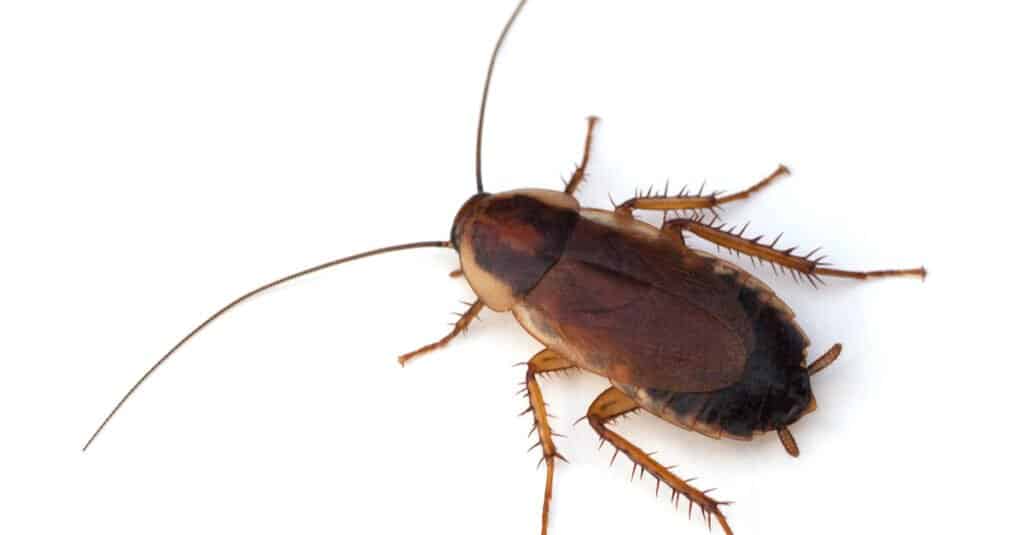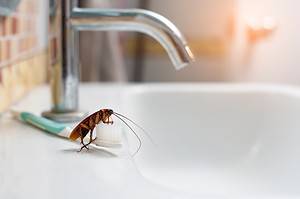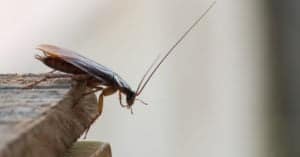The thought of a cockroach crawling over you in the night is enough to make anyone shudder; but what about the idea of a cockroach bite? If you’ve ever had problems with roach infestations in the past, you’ve probably felt the fear of being bitten by these disease-carrying pests.
Cockroaches aren’t as bad as they’re cracked up to be; less than 1% of all roach species are considered pestilential towards humans. That’s less than 50 species of cockroach—out of over 4,500. Out of those 50 species, under ten are considered common household pests in the United States.
Here, we’ll learn more about how to tell if the bug you’re looking at really is a cockroach. Then, we’ll explore whether or not roaches can bite, and if they can bite humans at night. Then, we’ll take a look at what a roach bite might look like, and ways to tell if you’ve been bitten by one of these crawlers. Finally, we’ll discover more about roach allergies, and what you can do to get rid of, and prevent, these ancient insects from taking up space in your home.
What Do Cockroaches Look Like?

Cockroach bites are rare as they’re nocturnal and prefer avoid humans.
©Melinda Fawver/Shutterstock.com
Cockroaches are often mistaken for beetles, water bugs, bed bugs, termites, and crickets. They have six legs equipped with spikes for traction when running and climbing, and long antennae. Their bodies are usually reddish-brown to nearly black; household species are between ¼ inch and two inches long. Nymphs (baby cockroaches) are generally pale, and get darker as they grow.
Can Roaches Bite?
The mouthparts of cockroaches haven’t changed much in the last 300 million years; they’re extremely generalized. Their heads are actually attached to their bodies at a 90-degree angle; if human heads were attached the same way, our faces would point to the sky.
Cockroach mouths are designed to feed on all kinds of waste; they’re not meant for attack, or even defense. So, while a cockroach bite is possible, it’s highly unlikely. Bites are uncommon, but are most likely to happen in cases of severe infestation.

Cockroaches are capable of biting, but their mouthparts aren’t designed for hurting humans, and bites are rare
©Keith Muzzioli/Shutterstock.com
Can Roaches Bite You At Night?
As you might imagine, cockroaches won’t run up and bite you in broad daylight. They’re nocturnal creatures, and would rather hide from threats than stand and fight. Because of this, cockroach bites almost always happen at night, while people are sleeping. Bites are rare, but may occur in situations where there is a severe infestation and a bedridden individual, like an elderly person or a small child.
What Do Cockroach Bites Look Like?
Roach bites are very difficult to diagnose because they are often indistinguishable from other types of insect bites. The bites of bed bugs, lice, and fleas are often confused for cockroach bites. This happens because roaches are more easily seen than other, smaller, pest bugs, so they get a disproportionate amount of the blame for bites.
Cockroach bites, like other insect bites, look like small red bumps. They may be raised, or swollen. Symptoms often go away within 24 hours. If an insect bite is accompanied by fever, labored breathing, or intense pain, you should seek immediate medical attention.
How Do You Know if You’ve Been Bitten By a Cockroach?
The only real way to know whether your insect bite is actually a cockroach bite is by the presence of roaches. If you are aware of a severe infestation in your home, and you wake up with insect bites on exposed parts of your body, then chances are good that they’re cockroach bites. However, if you haven’t seen any roaches, or signs of infestation, then you may have an altogether different problem—like bed bugs, or fleas.
Roach Bite, or Roach Allergy?
Because cockroaches are so good at spreading disease, bacteria, and pathogens, they’re highly effective at causing allergic reactions in humans. Many people have cockroach allergies and don’t even know it. Physical touch with a roach (as in, when they crawl over your bare skin in the night) can result in a localized reaction.
This reaction is often mistaken for a cockroach bite. The affected area may appear red and swollen, just like a bite. Allergies may also be triggered by breathing in cockroach leavings, like shed skins, pheromones, and feces. If you suspect an allergic reaction from cockroaches, then you may have an infestation.
How to Get Rid of Cockroaches

Cockroach bites can be prevented by promptly treating infestations before they become severe
©Georgy Dzyura/Shutterstock.com
To prevent cockroach bites, it’s important to deal with infestations promptly. You have two options to get rid of roaches: call in a professional pest exterminator, or take care of the cockroaches yourself. If you decide to deal with the cockroaches yourself, you’ll want to start with cockroach traps to determine where the worst areas of infestation are. Don’t use bleach, which is ineffective against cockroaches; instead, opt for boric acid, and traps specially designed for roaches.
Once you’ve located the worst of the problem, move on to eliminating the cockroaches with pesticides. Use extreme caution when handling and applying any pesticides; they’re toxic to people and pets. Once your roaches are all dead, carefully clean up all traces using a vacuum with a HEPA filter to avoid breathing in any roach feces or shed skins.
Preventing Roach Infestations
Cockroaches are drawn to warm, dark, damp places with easy access to sources of food and water. The easiest ways to prevent cockroach bites, and cockroach infestations, are to clean up all food and garbage, and keep clutter to a minimum. Additionally, regular cleaning of homes and businesses is a good way to catch roach problems early. Cockroaches also love cardboard; be sure to store items in plastic totes, rather than corrugated cardboard boxes.
The photo featured at the top of this post is © Yuliia Hurzhos/Shutterstock.com
Thank you for reading! Have some feedback for us? Contact the AZ Animals editorial team.






